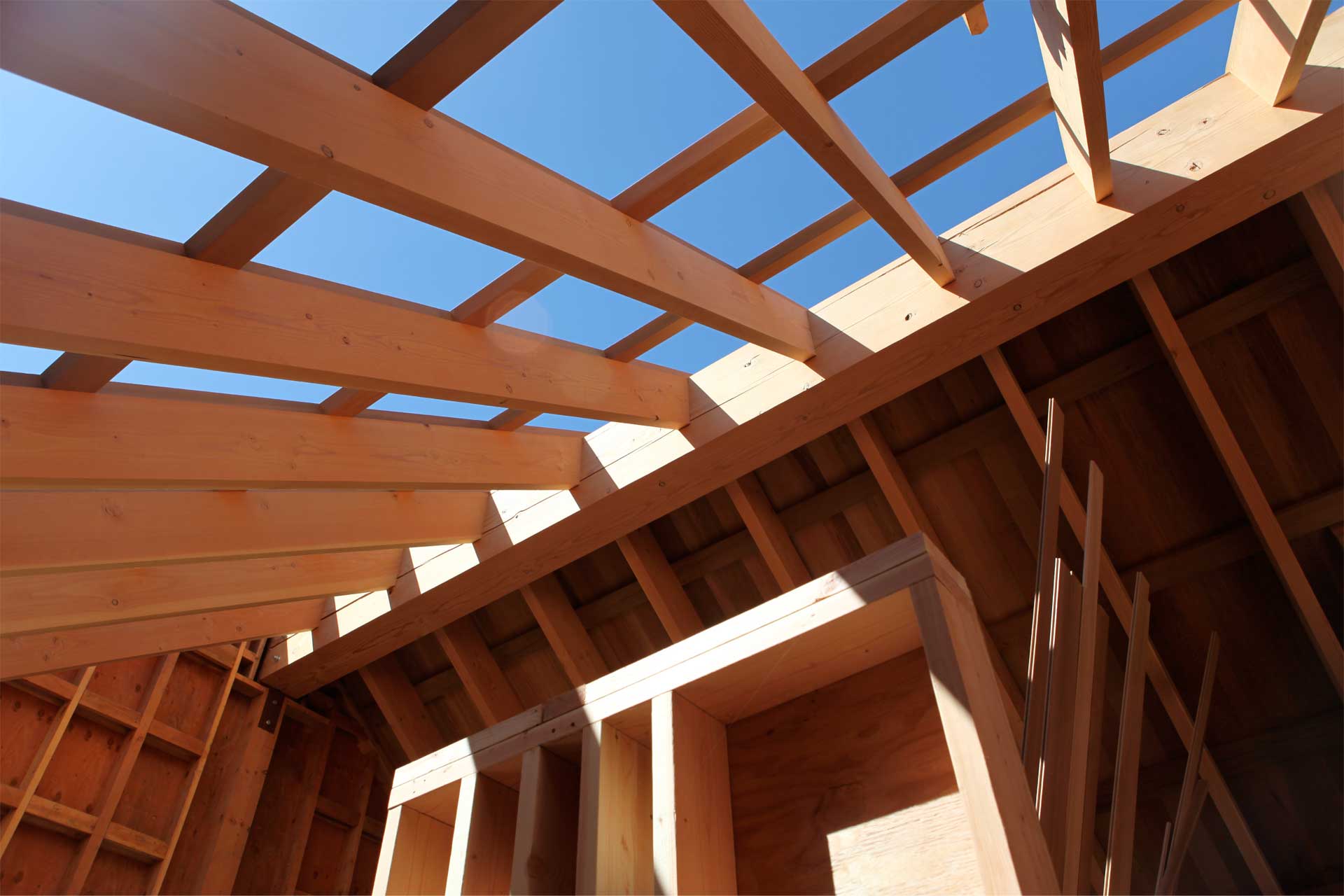ENERGY
Reducing loads
- Reducing heating and cooling loads on the mechanical systems is by far the most cost effective way to reducing energy use from mechanical systems. Therefore, much work must be done up front with the architect to reduce loads. This includes collaborating on the building shape, the choice of exterior materials, and crucially, the selection of windows.
- Energy modeling was performed to determine exactly what would be needed to create a home with ZERO heating and cooling required, or what is known as a passive house. While we did not quite reach this level of performance, by setting such an ambitious goal we challenged the design team to account for every step we took away from no heating and cooling. Ultimately, this has led to an incredibly comfortable and low energy use home.
Ground source heat exchange
- Because the home is fossil fuel-free, all mechanical systems need to be electric. Ground source heat pumps are the most efficient way to heat a home using electricity, because it exchanges heat with the relatively constant temperature of the ground, rather than air. Alternative Comfort Technology Inc. implemented 12 geothermal tubes 250 feet in depth using all HDPE geothermal piping. Other equipment includes Grundfos Magna pumps and Florida Geo Heat Pumps. Geothermal is recognized by the EPA as being the most efficient technology available today. It is also a natural system partner for a photovoltaic system.
- For the same reason, it is also the most efficient means of compressor-based cooling. However, the cooling system includes a bypass heat exchanger, which means for the majority of the year the radiant floors can be cooled using the ground water itself, rather than using a heat pump. This can be done because the ground water, at about 50F, is cold enough to cool the thermally massive slab.
- Advanced controls and variable speed pumping enables the system to provide exceptional thermal comfort for a much lower energy use than a typical home.
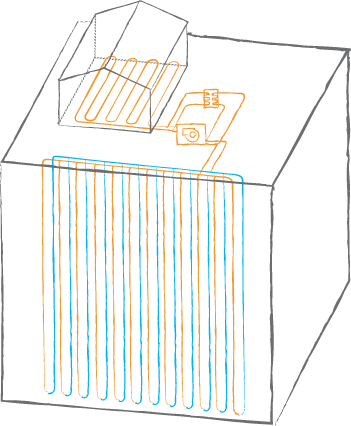
Diagram of the ground source heating and cooling system. Note the heat exchanger for passive cooling.
Dedicated outdoor air:
- Outdoor air provides a healthy, comfortable environment.
- Heat recovery ventilator pre-heats incoming air with exhaust air, eliminating the need to mechanically heat the air.
- Radiant system eliminates the need for re-circulated air, a major source of indoor air pollution.
Annual energy use / square foot
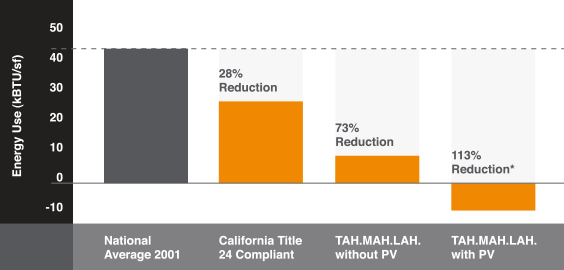
*The photovoltaic system for this residence has been sized to provide the expected annual energy use for electric vehicles. These vehicles will not be purchased until sometime after the family moves in, resulting in greater energy production than consumption.
Annual CO2 emissions / square foot
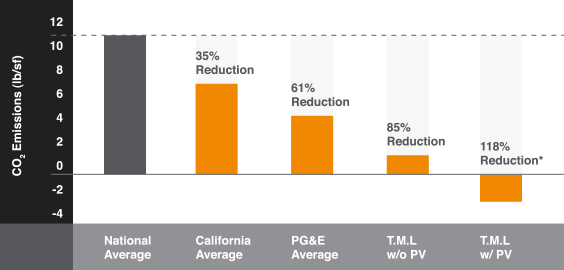
*The photovoltaic system for this residence has been sized to provide the expected annual energy use from electric vehicles. These vehicles will not be purchased until sometime after the family moves in, resulting in greater energy production than consumption. The net energy fed to the grid will offset carbon produced at the energy source.
Annual energy breakdown usage (including exterior uses)
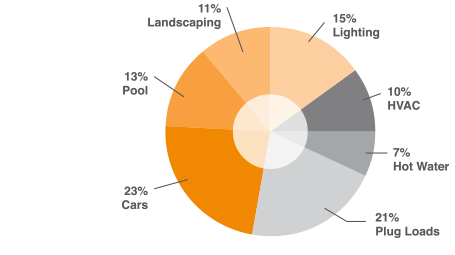
California in-state electricity production
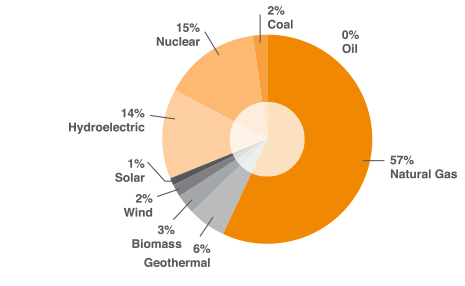
- The Project

